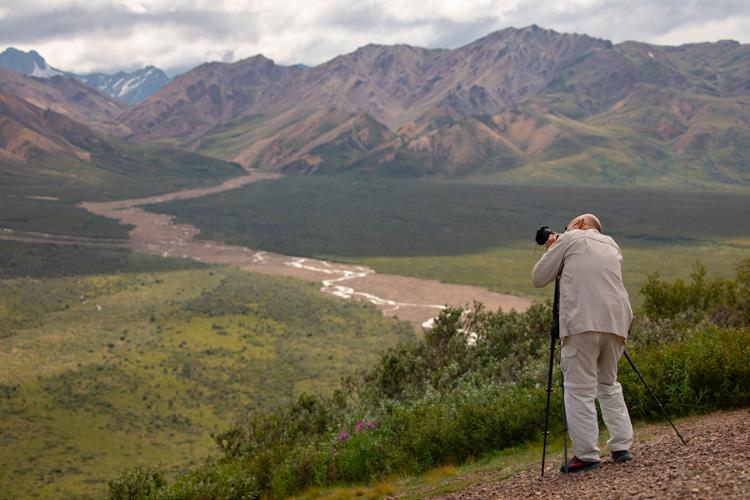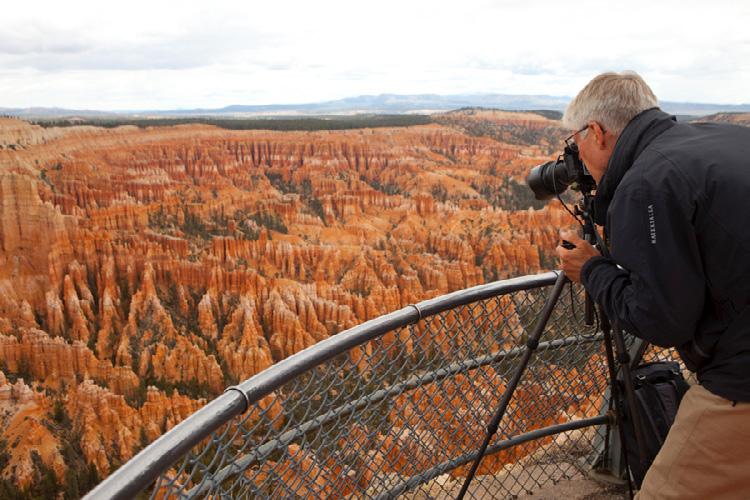
2 minute read
TRIPODS
As far as accessories go (i.e., things beyond the camera and lens), having a go-to tripod is one of the most important things to have in your bag. Not every occasion or even every trip requires a tripod, but there are many instances when they are indispensable.
Night photography, landscape photography, and slow shutter speed photography are all prime examples, but as you develop an understanding of your tripod, how to use it, and get out more and more to practice photos with it, you’ll likely find new applications where it quickly becomes one of your favorite tools. Whether a big lens is in your future or you take a liking to macro photography, investing in a good tripod will expand your abilities and interests to a new level.
When it comes to tripods, the adage you get what you pay for is pretty spot on. When you invest a little more money, you’ll get a lighter, easier-touse setup. A better tripod will be sturdier, more compact, or more durable. The trick is to find out what you’re willing to pay, and do the research to get the best combination of the above if you have to compromise. For travel, you will often sacrifice something so that it can be a little lighter and a little more compact.
A tripod is essentially two parts, the legs and the head. When getting something on the fancier end of things ($150+), you’ll likely be picking out each part separately.
When researching tripod legs, there are many, many options out there. Many brands, many price ranges, many materials they’re made of, etc. For travel photography, you will want to choose a tripod that folds down into minimum size and weight. Often, with those tripods with a rigid middle post (inside the three legs that spread out), you’ll find that the minimum size is still rather large. In addition, these extra posts are shortcuts to stability and usually denote a “less-than-stable” tripod. While not a hard and fast rule, this is often the case.
Sticker shock is a common symptom of shopping for tripods. Two tripods that can look identical next to one another can vary by hundreds of dollars. This is usually due to the materials used and the overall quality of construction. These things will impact the overall stability, durability and packability of the tripod, so looking for the bargain could compromise your overall satisfaction with the tripod.

Carbon fiber is no doubt the cream of the crop, being very stable and very lightweight. In addition, it reduces small vibrations that can transfer from the ground to the camera (but this is really a minor benefit, not worth buying strictly for this reason). The main reason will be it weighs much less than other materials like aluminium.
The overall construction of a tripod is also very important to the lasting quality, not to mention whether you are happy using it from trip to trip or day to day. How precise the rivets are made and how secure the latches are play a big part in overall quality. It’s tempting to purchase camera gear online, and this tends to work just fine with camera bodies, lenses, and other accessories. However, because a tripod is a mechanical accessory, it’s quite important for you to really assess the tripod for its weight, size, and especially moving parts. For instance, do you like the way the legs compress with latches, or would you rather have the legs twist down? Are the legs too small, or is the tripod too short to reach your eye level? (a common thing to think about with smaller travel-style tripods). More than any other piece of camera gear, it’s key to get to your local camera shop and try out the tripod before you buy. You’ll quickly know whether it’ll work for you or not.










